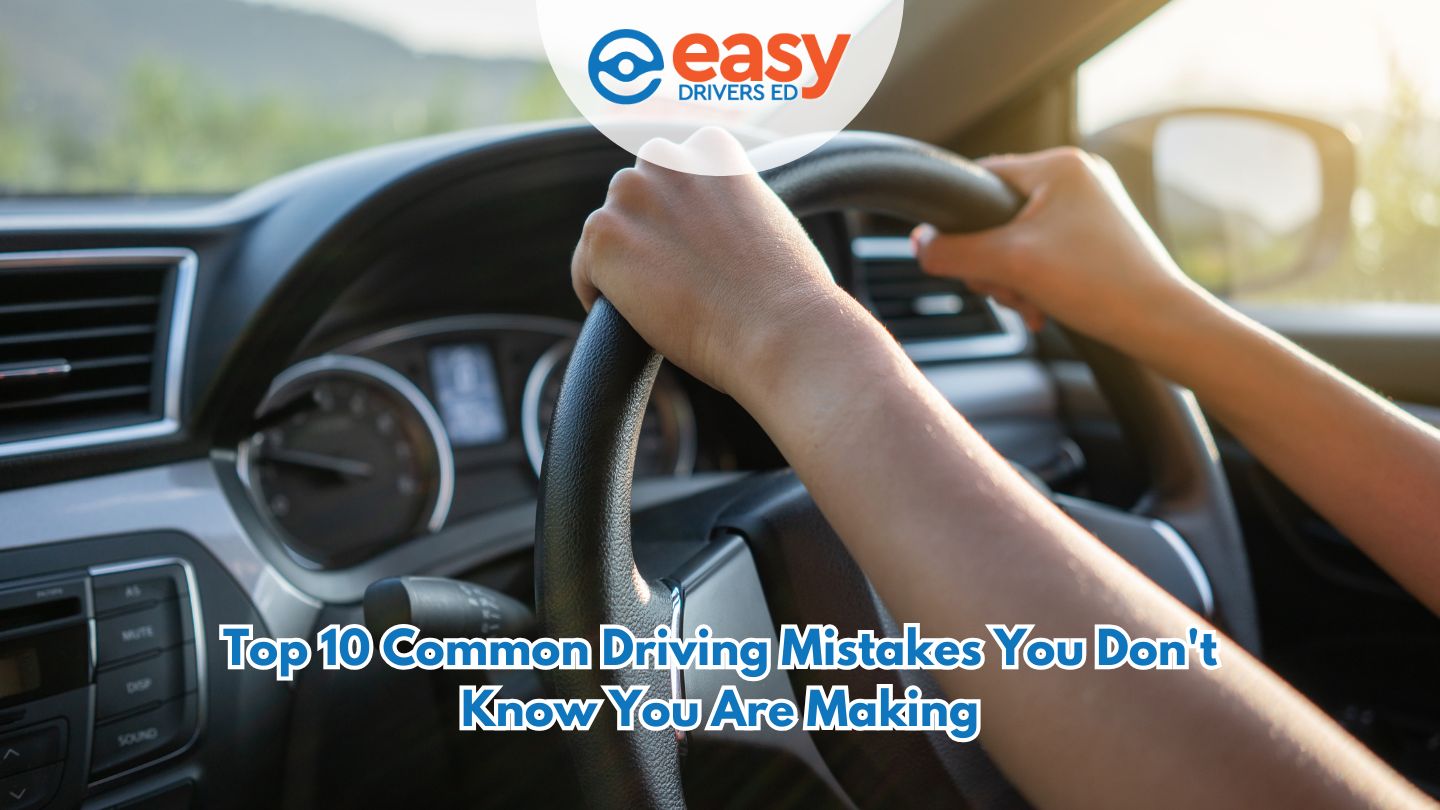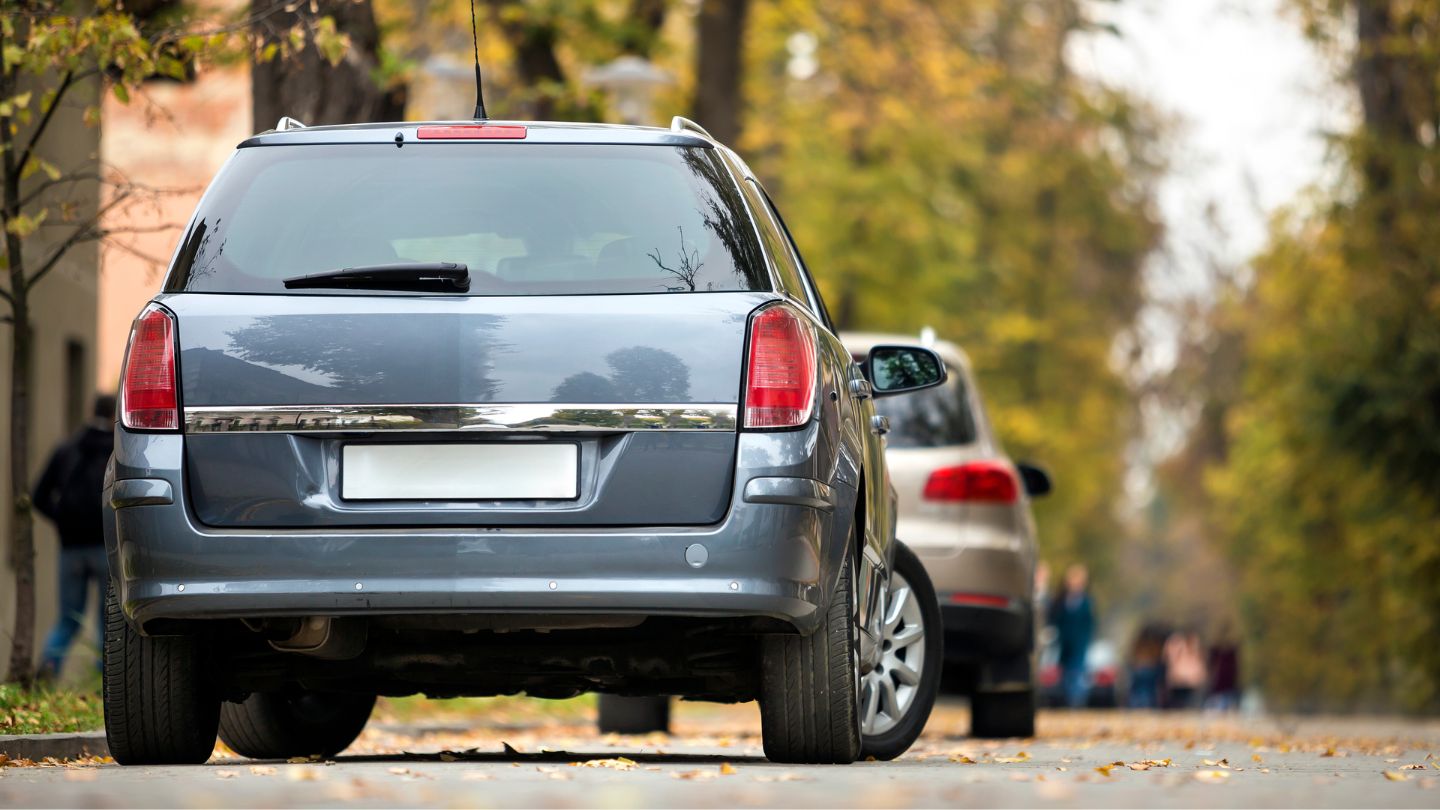Think you’re a safe driver? You might be making common driving mistakes you don’t know you are making. From speed control to distracted driving, this blog highlights ten mistakes that could be putting you and others at risk.
Key Takeaways
- Controlling speed based on road and weather conditions is crucial for safe driving, as both speeding and driving too slowly can lead to accidents.
- Driver inattention, particularly due to distractions such as phones, is a leading cause of accidents; maintaining focus is vital for safety.
- Proper signaling, space judgment, and awareness of blind spots are essential for safe lane changes and overall driving safety.
Failure to Control Speed
Maintaining appropriate speed is crucial for safe driving. It’s a common misconception among many drivers that staying under the posted speed limit equates to safe driving, but this isn’t always true. Speeding can still occur if you’re not considering current road and weather conditions. Even below the speed limit, going too fast can result in losing control of your vehicle, making it challenging to halt or evade obstacles promptly.
Speed limits are established to protect all drivers on the road. Adherence to these prescribed speeds prevents crashes and promotes a consistent flow of traffic. Surpassing these limits diminishes your reaction time and increases the likelihood of severe accidents occurring. The importance lies beyond just avoiding fines—it’s about preserving lives, including yours.
Conversely, operating your vehicle at an excessively slow pace poses its own dangers by disrupting normal traffic patterns and compelling other drivers into potentially risky maneuvers like overtaking or decelerating suddenly, raising accident probabilities as well. New drivers should focus on managing their speed carefully by frequently monitoring their speedometer so they neither surpass nor fall significantly below the designated speed limit.
Driver Inattention
Distractions are ubiquitous, ranging from smartphones and sound systems to snacks and conversational companions. They contribute significantly to vehicular mishaps. Glancing at your phone while behind the wheel isn’t simply a poor practice—it’s a deadly one that results in thousands of fatalities each year. Concentration is essential when controlling a vehicle, especially for dodging incidents caused by distracted driving.
During their initial experiences with driving tests or exams, new drivers often struggle with effectively identifying potential dangers—a key competency for preventing crashes. Adopting the right seating posture helps ensure quick responses to changing road conditions by facilitating better control over the vehicle—quick reflexes can also be attributed to the proper placement of feet. As someone newly acquainted with being behind the wheel, it’s fundamental to maintain hands on the steering wheel, keep eyes directed toward the road ahead, and stay mentally engaged in navigating.
It’s not just about putting your phone away while driving. It’s crucial to develop habits that ensure you remain fully alert when operating a vehicle. By placing your phone in the backseat or glove compartment, you not only reduce the temptation to check it but also maintain your focus on driving safely, thereby protecting yourself and fellow drivers on the road.
Unsafe Lane Changes
Switching lanes, while a common maneuver, carries potential hazards. Neglecting the use of turn signals can create confusion among other drivers and greatly increase the likelihood of crashes. It is a frequent error for many drivers to signal too late before making their turn or shifting lanes, which doesn’t give sufficient warning to surrounding traffic. This sudden action may surprise other road users and lead to dangerous scenarios.
The presence of blind spots should be carefully accounted for as well. Sorely relying on mirrors does not offer full coverage. It’s essential for drivers to physically look over their shoulder in order to catch any vehicles that might go undetected by mirrors alone. This practice is especially critical for operators of larger vehicles due to more extensive blind spots. A common oversight among new drivers is an over-dependence on mirrors without sufficiently checking their surroundings manually, thereby heightening accident risks.
Navigating lane changes amidst high-speed traffic requires extra vigilance, particularly when traversing highways where swift speeds amplify the dangers associated with improper lane changes. Continuous awareness regarding neighboring cars’ positions helps prevent staying unnoticed within their blind zones whilst changing lanes. Diligent use of indicators coupled with thorough checks for unseen areas significantly enhances safety during these maneuvers across all vehicular pathways.
Following Too Closely
Keeping an insufficient gap between your vehicle and the one ahead, also known as tailgating, ranks among the more frequent driving errors and is exceedingly dangerous. This behavior considerably escalates the probability of engaging in accidents or minor collisions. Abiding by a guideline that ensures at least three seconds of space from the car before you can help circumvent such driving blunders, granting ample opportunity to respond if there’s an abrupt halt.
More complex situations like adverse weather conditions, nighttime journeys, or when trailing behind motorcycles and larger vehicles call for even wider gaps due to diminished visibility and protracted braking distances. Novice drivers often have trouble accurately gauging these stopping ranges, which increases their vulnerability to hazardous scenarios without maintaining adequate separation.
Upholding an appropriate distance not only safeguards your well-being but reinforces collective traffic safety. It fosters a smoother progression on roads while diminishing chances for rear-end crashes. Exercising patience and prudence plays a substantial role in steering clear of vehicular mishaps.
Improper Use of Turn Signals
Turn signals serve as an essential means for conveying your planned maneuvers to fellow motorists. Yet, the incorrect utilization of these indicators is a widespread error among drivers, particularly novices, who often neglect to activate their turn signal while making turns or shifting lanes. This oversight leads to confusion and can result in mishaps. Cultivating consistent signaling habits when turning or transitioning between lanes is key to becoming a responsible driver.
Neglecting turn signals renders other drivers oblivious to what you’re about to do, which substantially increases the probability of traffic accidents occurring. Overlooking this detail isn’t just a trivial mistake. It’s integral to maintaining safety on the roadways. When you signal every move predictably, it enables others on the road to foresee and adjust accordingly—thereby diminishing potential collisions.
Employing turn signals correctly transcends mere adherence to traffic regulations—it’s pivotal for safeguarding all individuals sharing the street space. The transparent and reliable use of turn signals greatly contributes to fostering a more secure driving atmosphere overall.
Not Judging Spaces Well
Accurately assessing spaces is an essential aspect of safe driving. A considerable number of drivers find it difficult to judge distances and spaces accurately, which can result in parking difficulties and minor collisions. This task becomes particularly daunting in cramped parking lots and densely populated zones.
Developing strong spatial awareness often requires guided instruction and structured learning. Through professionally designed driver education programs, learners can gain the theoretical knowledge and visual understanding needed to evaluate space effectively in real-world driving conditions. These programs incorporate key principles of vehicle positioning, turning radius, and environmental scanning—skills that help drivers navigate complex parking situations and tight traffic zones with greater confidence.
With the right training, drivers become better equipped to recognize vehicle dimensions, make more accurate judgments, and reduce the risk of low-speed accidents. Regular reinforcement of these concepts within a formal learning environment helps strengthen long-term safe driving habits.
Over-Relying on Mirrors
Relying too heavily on mirrors while driving may be dangerous, as improper adjustment can result in blind spots that increase the risk when changing lanes. To prevent accidents associated with blind spots, drivers should perform shoulder checks in addition to using mirrors.
Turning one’s head to scan the environment is a vital step for ensuring an unobstructed view of your surroundings. Even well-positioned mirrors have limitations and may not capture fast-approaching vehicles or motorcycles in adjacent lanes.
Modern vehicles often include blind spot detection systems, which can be helpful aids. However, these should only be used as a supplement—not a substitute—for manual checks. Combining properly adjusted mirrors, blind spot alerts, and direct visual confirmation through shoulder checks ensures a comprehensive understanding of traffic conditions, significantly enhancing safety while driving.
Speeding Through Yellow Lights
Numerous drivers possess the tendency to accelerate when they encounter a yellow light, which can create dangerous circumstances. The chances of collisions escalate when motorists hurry through yellow lights, especially if it shifts to red prior to their exit from the crossroads.
Adopting a more cautious tactic by decelerating and getting ready for a stop at a yellow light is advisable. Yellow signals should act as an alert that stopping is imminent if conditions permit rather than signaling an opportunity to hasten past a stop line.
Reacting properly to yellow lights requires understanding timing, judgment, and distance—skills that professional driving courses emphasize during theoretical instruction. These scenarios are commonly discussed in structured learning to prepare new drivers for real-world split-second decisions. Recognizing when to stop safely instead of accelerating reinforces defensive driving principles and reduces intersection-related accidents.
Forgetting to Turn Off High Beams
High beams are useful for driving on isolated dark roads, but forgetting to turn them off in traffic can create hazardous conditions. The high glare from high beams can temporarily blind oncoming drivers, making it more dangerous to drive in traffic. Proper headlight usage is essential to maintain road safety.
Use high beams only when no other cars are around, and switch to low beams when another car approaches. Many drivers mistakenly keep high beams on in traffic, risking serious accidents.
Using high beams in adverse weather can worsen visibility rather than improve it. Correct headlight usage prevents blinding other drivers and enhances overall road safety.
Sudden Stops Without Warning
Making sudden, unanticipated stops can elevate the chance of being hit from behind. These unforeseen halts may startle other drivers, especially when they are not prepared for a vehicle to come to an abrupt stop, potentially involving additional vehicles in the incident.
To avoid catching other drivers by surprise, it’s crucial to accelerate slowly and indicate your plans ahead of time. By braking gently and signaling promptly, you considerably improve overall safety on the roads and minimize the chances of accidents occurring.
Consistently following these techniques ensures a more fluid driving experience and lessens the probability of minor collisions between vehicles.
Summary
In conclusion, recognizing and addressing these common driving mistakes can significantly enhance your safety and that of others on the road. From managing speed and minimizing distractions to effectively using turn signals and keeping safe distances, each element is vital for road safety.
At EasyDriversEd, we specialize in providing comprehensive driver education in Dallas, offering a state-approved Texas online driver education course designed to help you avoid these errors and build the skills and confidence necessary for safe driving. Whether you’re preparing for your learner’s permit or reinforcing good habits, our engaging, accessible course supports your journey to becoming a safer, smarter driver. Ready to drive safer? Contact us today!
Frequently Asked Questions
1. Why is it dangerous to drive too slowly, even if you’re following the law?
Driving significantly under the speed limit can disrupt traffic flow and increase the risk of being rear-ended or causing erratic lane changes by others.
2. What’s the safest way to handle a yellow traffic light?
If it’s safe to stop when the light turns yellow, do so calmly. Accelerating to beat the red light increases the risk of intersection crashes.
3. How can I improve my ability to judge distance and space while driving?
Practice recognizing vehicle lengths and gaps in traffic during everyday driving, and stay alert to how your car fits within lanes and parking spaces.




